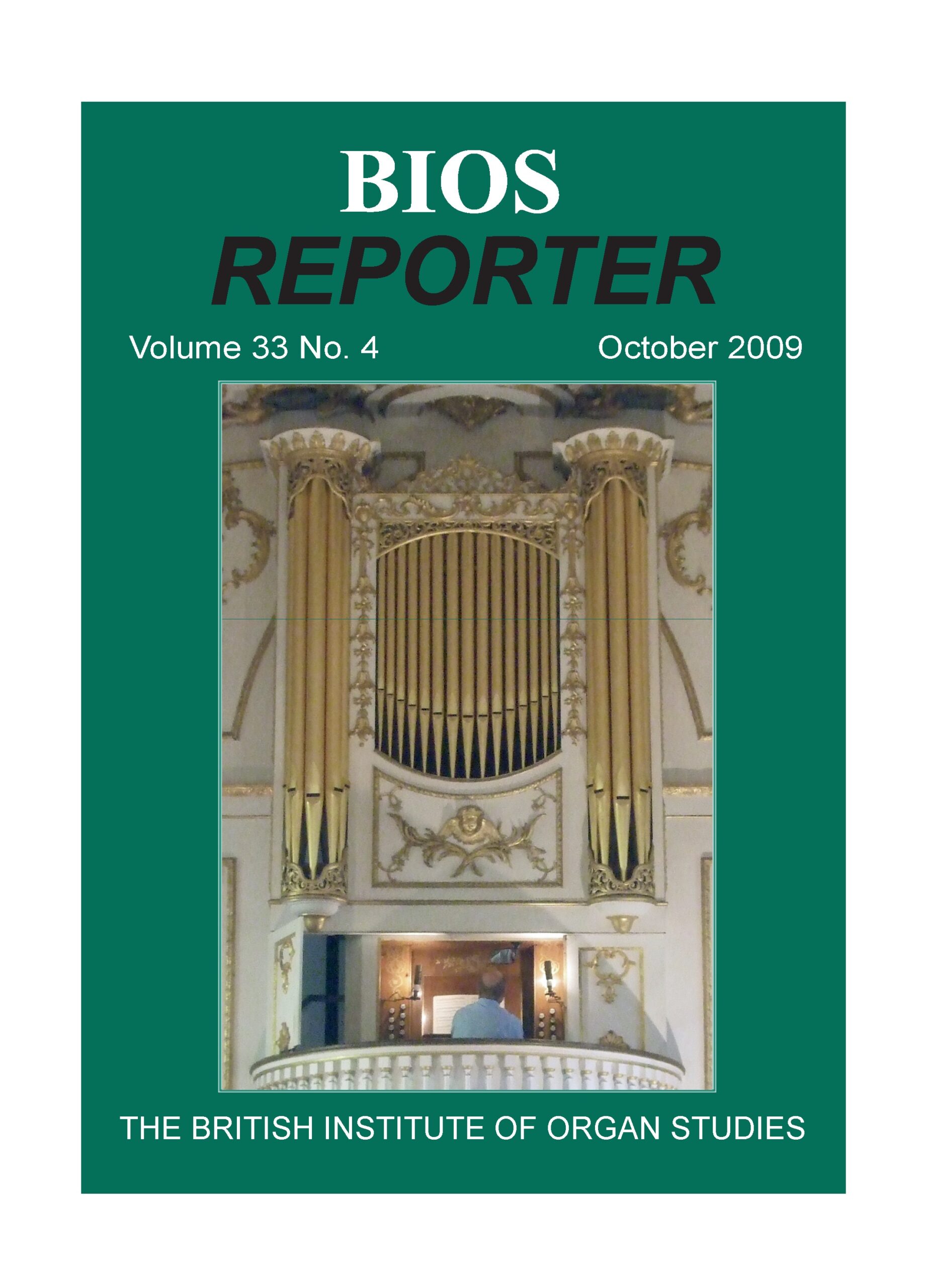Your basket is currently empty!
BIOS Reporter – Volume 33, No.4 – October 2009
It has been a summer of small organs for me (notwithstanding the new Worcester Quire organ – experienced in all its glory during a recent IBO meeting). Moreover, many of the organs that I encountered have been in various states of neglect. During a summer holiday in north Devon we revisited a chapel that was our regular place of worship when our children were younger (because it had, and still has, a lively junior church). The organ (no makers name or date) used to be played regularly but is so no longer as no-one is available to play it. To add insult to injury, the organ seat is used to store the spare drumskins for the church band. More recently, on offering to play for an evening service in a local village church, I took the precaution of taking a look at the organ beforehand as I had heard that ‘only one or two stops work’. Sure enough, no swells stops could be drawn without ciphering and the pedal bourdon wheezed and moaned to little effect. On closer inspection the top of the bellows revealed a few tell-tale signs of trouble – leather buttons dotted around among the dead flies, and a piece of phosphor-bronze wire that clearly belonged somewhere. After easing the action a little in places, and removing various pieces of ironmongery that had been wedged in to silence troublesome keys, the swell came back to life (apart from the superoctave coupler which steadfastly resisted my efforts at first-aid clearly more drastic surgery will be needed). The net result was that an otherwise unremarkable organ, but advantageously sited at the west end of the nave, led the singing of a small but appreciative congregation. I have no doubt that this, or similar, stories could be repeated up and down the land. It seems that the decline of an organ really starts when there is no organist to play it and that this situation is more prevalent than I had imagined…
